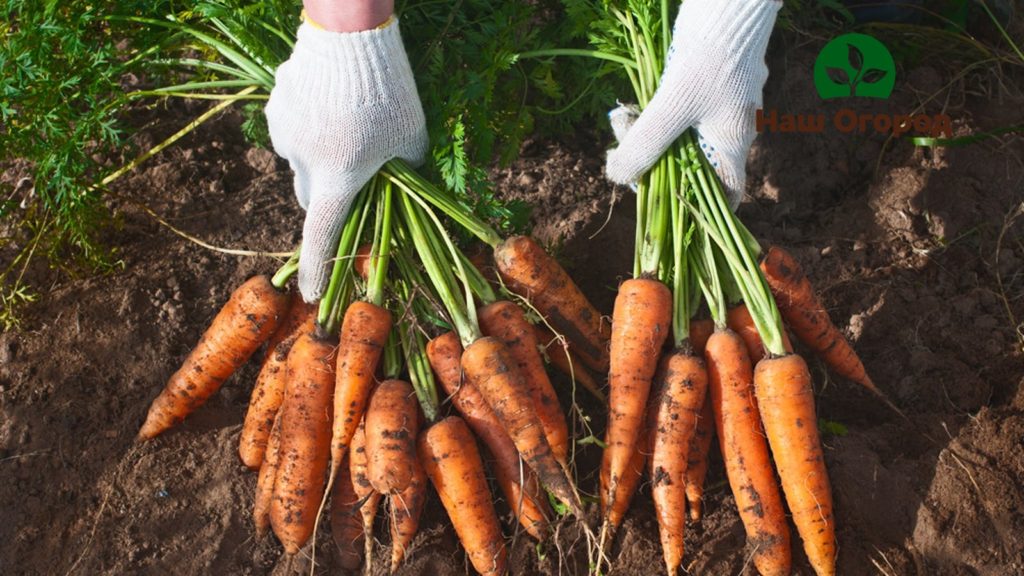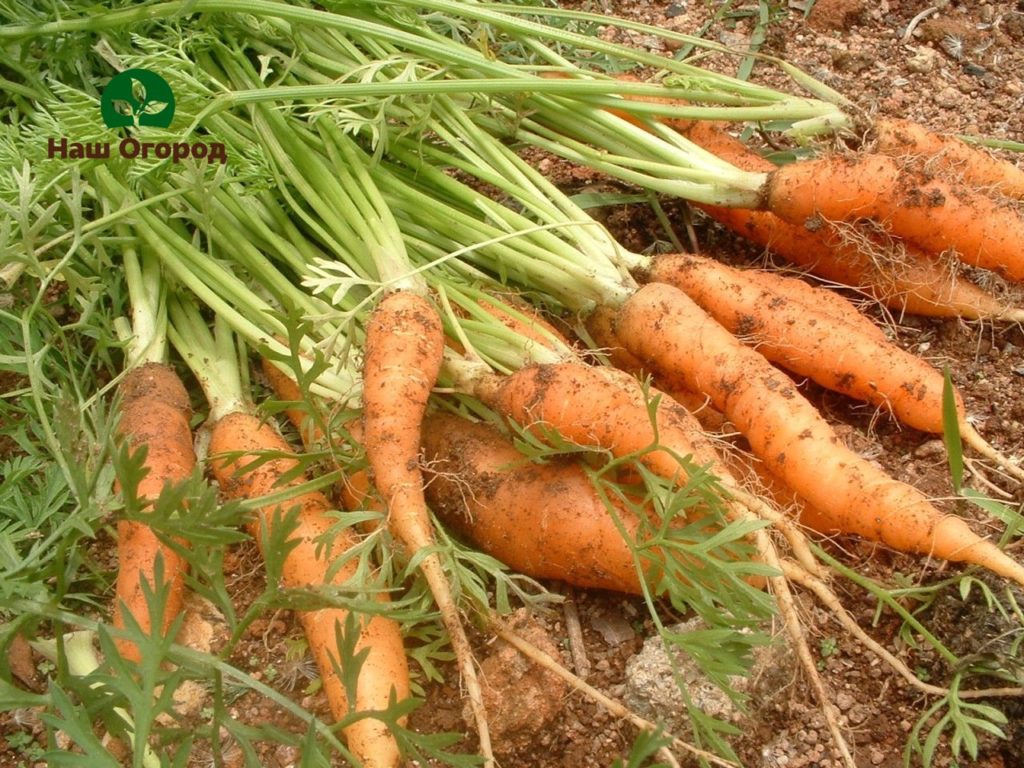Carrot. Growing tips!
Content:
Carrots in the garden

Currently, there are a lot of varieties and hybrids of carrots.
Many gardeners consider carrots in the garden to be the simplest and not whimsical root crop. Carrots very easily survive temperature fluctuations, they do not need to be closed, it is very simple to plant and care for. But it is not uncommon for the carrot harvest to disappoint summer residents. Why? This is what we will try to figure out today.
The choice of the variety.
Currently, there are a lot of varieties and hybrids of carrots. And from year to year more and more new varieties appear. There are two criteria to consider when choosing the right carrot variety. This is the climatic zone and the yield of the variety.
Central Asian and European varieties of carrots are not suitable for cultivation in our strip, the yield will be either very low or the seeds will not sprout.
So it is better to choose carrots adapted to the climatic zone of Russia. Resistant to cold weather and frequent temperature changes. If the information about the region is not indicated on the seed bag, you need to follow simple rules. For regions with short summers with frequent temperature changes, it is best to purchase varieties of early or medium ripening, with not very large and long fruits.
In the southern regions, long and large conical carrots can be grown. You also need to pay close attention to the resistance of the variety to diseases, pests and lack of moisture.
Care rules.
Sowing carrots is a very troublesome business, you need to prepare a deeply dug garden bed with well-fertilized soil, prepare the seeds for planting, and you will also have to tinker with weeding and thinning the carrot beds.
When carrots start to grow, many gardeners make a fatal mistake and stop caring for carrots, which is absolutely impossible to do. As a result of wrong actions, you can decide the harvest. Carrots are very fond of moisture, so they need to be watered very often, especially in hot dry weather.
Water the carrots very abundantly once every 3 days, watering is accompanied by loosening the soil. It is necessary to loosen the carrot bed regularly. Carrots are very fond of breathable soil. It is very important to loosen the soil during prolonged rains, this will ensure good evaporation of moisture and prevent the soil from souring. When feeding carrots, it is very important to remember that carrots do not like too much organic fertilizers.

Carrots are very fond of moisture, so they need to be watered very often.
Therefore, carrots should be fed in several stages. The first fertilization of carrots must be done before the first thinning. At the first stage, carrots are fed with manure or a solution of mineral fertilizers. The second feeding should be done when 5-6 leaves appear on the carrots. Fertilize with ash infusion or nitric acid fertilizers. The third complementary food must be made with potash fertilizers.
As I found out from personal experience, the main enemy of the carrot harvest is the carrot fly. But slugs, scoop, bear and wireworm can also ruin the crop. To combat these pests, pre-winter digging of the soil is perfect. To fix the result, marigolds or calendula should be planted along the edges of the beds.
Carrots in the garden: ripening terms
The timing of ripening depends not only on how long you will harvest, but also how the carrots will be stored throughout the winter. Root crops of early varieties contain a lot of moisture in autumn and do not have time to gain a full complex of vitamins.
Varieties of early carrots are best eaten immediately, since they are absolutely not suitable for storage, the shelf life of such a variety of carrots in the cellar is only one month, then the carrots begin to rot. Medium-term varieties also have a high moisture content, but there are much more vitamins and macro and micro elements than in early varieties.
It is recommended to store such carrots frozen or canned, so all the useful substances of the carrots are best preserved. In the cellar, a mid-season carrot variety is stored from two to three months.
Late varieties of carrots have a very dense and even tough pulp. Late carrot varieties are very healthy and nutritious. And there are no problems with storage, such varieties are stored in the cellar until spring.

